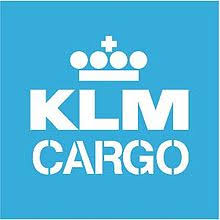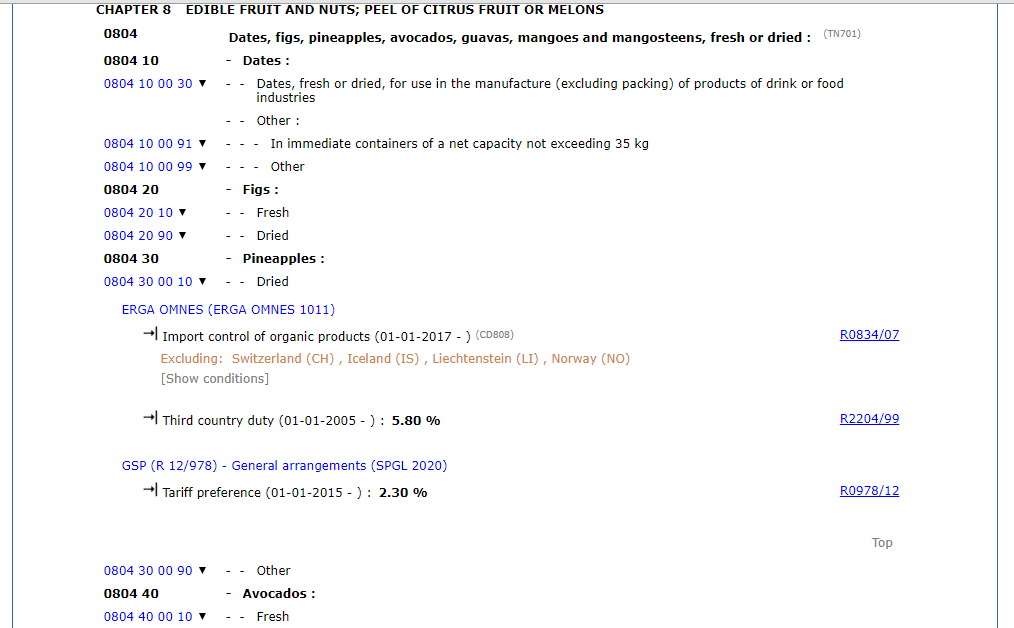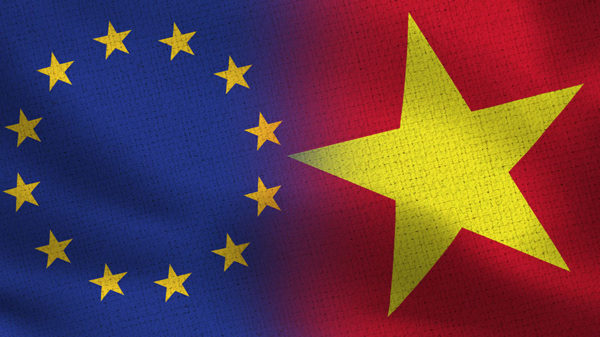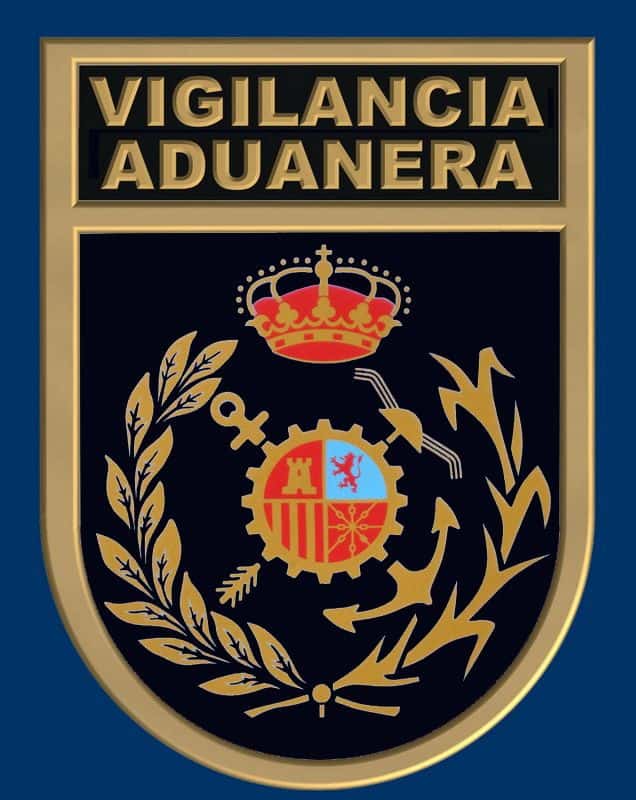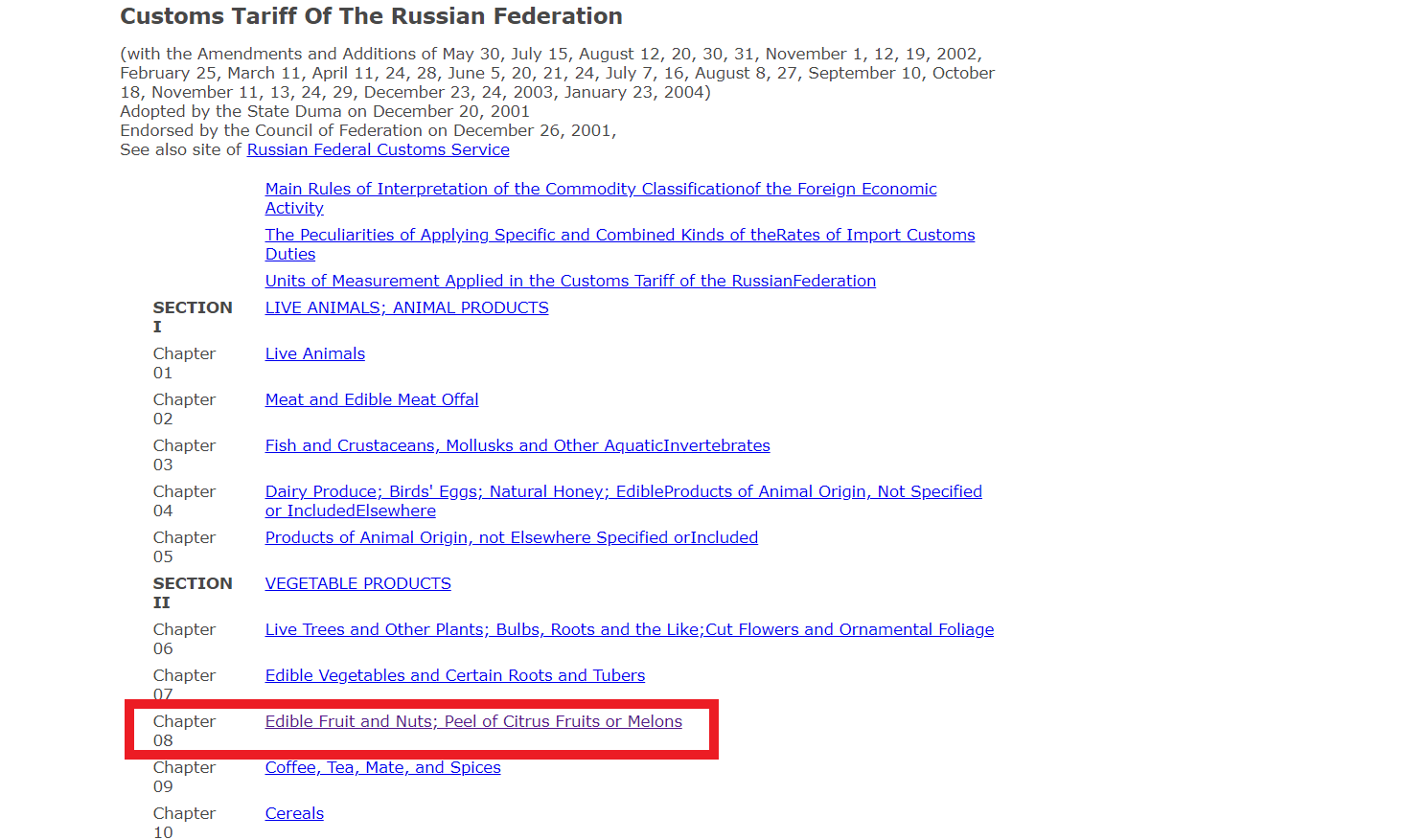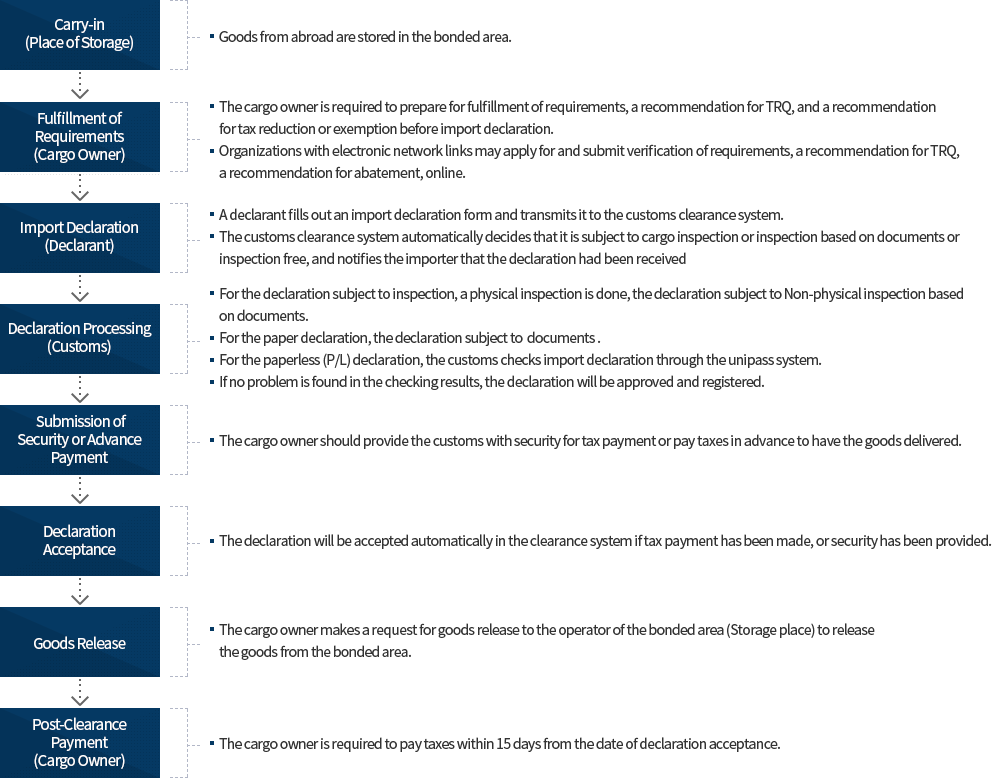Do you need to import or export between Vietnam and Japan? You've come to the right place. Docshipper has gathered for you everything there is to know about this operation and how we can help you. Enjoy your reading!
What is the best method to ship your goods from Vietnam to Japan ?
A question often comes up: air freight or sea freight? Let us explain it to you with some very important details.

Sea freight from Vietnam to Japan
![]()
Recommendation DocShipper : Is sea freight the most cost effective option ?
Yes if ;
- Your shipment volume is more than 2 CBM
- You’re not really in a hurry to receive your goods
Note DocShipper : Please, fill our form and get an efficient answer from our specialised sellers. You can ask for any pricing (sea/air freight).
Overview - Ocean cargo from Vietnam to Japan
With its 27,000 km of coastline for a surface area of 370,000 km2, the Japanese archipelago has 073 ports, i.e. a shelter for 27 km of shoreline. In this country where maritime activities play an essential role three types of port establishments share the traffic According to their size there are 17 specially designated major ports 94 major and more than 900 local ports two exceptions except Niigata on the Sea of Japan and Muroran Hokkaido all the specially designated major ports are located between Tokyo Bay and Shimonoseki Strait on the southern coast of Japan. In 1972 700,000 ships carried in connection with a Japanese port nearly billions of tons of goods Despite their very high level international trade 553 million tonnes in 1971, i.e. approximately one fifth of the world's total is just over one third of the world's total. of total traffic, leaving cabotage with a preponderant share of 299 million tons
Open to the Pacific Ocean at the outlet of the second agglomeration. the country's urban development2 as the gateway to the Inland Sea and Osaka Bay. is home to two of Japan's major international trading ports Kobe first Japanese port and third world port Osaka fourth port archipelago merchant
Shipping company offering services from Vietnam to Japan ports
Here are few examples :




Port of Nagoya
The port of Nagoya is located in Nagoya, Japan. It has a very impressive annual traffic.
- 186.3 Mt (2011)
- 2.9 million TEUs (2017)
- 15th largest port in the world and 1st in Japan
Port of Chiba
It's found like others in Tokyo Bay. It is the largest seaport in the country. Stretching over 25,000 hectares and therefore over several cities, its traffic is diverse.
In 2017, it is almost 5M of TEUs which transited.
Port of Tokyo
The capital of Japan is the 7th largest seaport for Japanese goods by total volume traded, and the 35th largest in the world in 2006, as well as the country's leading container port and the 26th largest in the world in 2007. However, the overall port activities around its urban area, which includes the three neighbouring ports of Chiba (to the east, Japan's 2nd largest cargo port and the 16th largest in the world in terms of total volume traded), Yokohama (to the west, Japan's 3rd largest cargo port and the 21st largest in the world in terms of total volume traded, and the country's 2nd largest container port and the 28th largest in the world) and, to a lesser extent, Kawasaki (to the west), make Tokyo Bay the largest continuous industrial port complex in the world.
It has an annual traffic of 4.7 million TEUs in 2017.
Should I ship by consolidation or full container from Vietnam to Japan ?
LCL
LCL - Less Than Container Load (or consolidation) The Full container is by far the cheapest option. The LCL, by grouping together different shippers, will give you the advantages of the FCL without having the necessary volume.
Advantages of shipping by LCL
LCL will provide a very suitable means of transportation for cargo.
Why ?
Benefit from the perfect solution if your volume exceeds the air freight limit but is not enough to fill a FCL.
Disadvantages of shipping by LCL
Price per CBM will be more expensive than FCL.
Often not a viable shipping option for cargo volumes above 13,14 cbm (cubic metres) from Vietnam. But it may depend on few criters, please call us !
FCL
FCL refers to a container (20 or 40 feet). From Vietnam, it will be the cheapest way to transport your goods.
Nevertheless, to benefit from these monetary advantages, you need a very important volume.
Advantages of FCL sea freight
Price per cubic meter much cheaper than LCL or even air freight or other. The most competitive.
More convenient to maximize the space within a container from 20″ or 40″.
Being the only shipper, we won't need to open and close the container several times: less risks.
Disadvantages of FCL shipping
Your volume exceeds 14,15 CBM ? (equal to 40 to 70% of a 20″ container).
If yes, we will opt for this option.
How long does it take to ship from Vietnam to Japan by sea freight ?
| Kobe | Tokyo | Osaka | Yokohama | Nagoya | Chiba | |
| Da Nang | 7 days | 6 days | 7 days | 7 days | 7 days | 8 days |
| Saigon | 7 days | 7 days | 8 days | 8 days | 8 days | 7 days |
| Ba Ngoi | 8 days | 6 days | 7 days | 7 days | 7 days | 6 days |
| Cam Pha Port | 7 days | 8 days | 7 days | 6 days | 8 days | 8 days |
**You need to remind that transit time here is only about the freight (to have the total you have to take into account the pick up and the delivery of course)**
How much does it cost to ship a container from Vietnam to Japan ?
Our customers (professionals and private individuals) exporting from Vietnam to Japan, use sea freight. It is the most cost-effective solution, especially considering that the transit time is only about 1 week.
Anyway it is in any case (any destination) the best solution to save if your volume and weight are above 100kgs/ 1 CBM.
Docshipper Note: Contacting us has never been easier. Just fill in the form and / or send us an email. We operate on a case-by-case basis in order to provide you with a quality specialised service. Thus, we need you to fill in the information specific to your operation (addresses, desired services, dimensions...).
Docshipper will handle your demand and revert to you as soon as we can with precise answer.
Special sea freight services
Reefer container from Vietnam to Japan
The second hand reefer container is the ideal tool for the storage and transport of refrigerated products. Often used in catering, agriculture or supermarkets. The reefer container is a large cold room. Removable or not, store from -23°C to +23°C. It allows you to maintain the temperature of food and preparations on volumes ranging from 17 m3 to 69 m3.
Docshipper will advise you, if necessary, and then reserve it for you.
Roro/Bulk/OOG from Vietnam to Japan
RORO:
It refers primarily to the handling technique: packages are loaded and unloaded by rolling them from the port Ro-Ro ramp (where it exists) to the ship's mobile ramp, thus allowing anything rolling in the ship's garage to be driven into or out of the ship's garage in the other direction. The Ro-Ro is particularly suitable for the transport of trucks, semi-trailers, tractors, excavators, etc. It is also suitable for transporting containers or swap bodies that are brought into the ship's garage by means of forklifts or trailers.
BULK:
These are goods in bulk, i.e., in pieces or grains, such as grain, coal, ore, gravel, sand or stone. A distinction is made between bulk goods and bulk liquids: (oil and oil products).
OOG
OOG (Out of Gauge) : It refeers to special dimensions or weight. Thus these shipping cannot be loaded in simple containers. These types of cargoes are usually loaded onto a platform or trailer for transportation.

Air freight from Vietnam to Japan
![]()
Recommendation DocShipper : Air freight can be the best option if :
- Your goods volume is not exceeding 2 CBM
- You’re in a hurry to get your cargo
Note DocShipper : Please fill the online form. We will contact you back with pricing and any other answer. Feel free to ask your questions.
Overview – Classic vs Express air freight
Express will obviously be a more expensive service, but in the end it's not just a question of budget. Indeed it depends on the time you have before you receive your goods. So if you have to receive the goods within a week, you will surely be ready to pay more.
What is the difference between volumetric and gross weight?
*To make a quote based on your good's specifications, we try two calculations for getting the chargeable weight.
Please immerse yourself in the example below to better understand. We will select the highest weight in order to work on your quotation. The two images below give you a better understanding of the two methods:


Should I choose a Classic Air freight from Vietnam to Japan ?
Which airlines company should you ship with ?


- ANA, short for All Nippon Airways, is an air transport company that was founded in 1952 as the Japan Helicopter and Airplane Transport Corporation. The company is a direct result of World War II with the Japanese government's obligation to recreate an air transport network in the country. The international service center is based at Narita International Airport; the Japanese service center is based at Tokyo-Haneda International Airport. It has been rated 5-star Skytrax1 since March 29, along with Cathay Pacific, Singapore Airlines, Malaysia Airlines, Asiana Airlines, Qatar Airways and Hainan Airlines. The ANA Group has two subsidiaries: ANA Wings and Air Japan
- Vietnam Airlines (in Vietnamese Hãng hàng không Quốc gia Việt Nam) is the national airline of Vietnam. It operates domestic and international flights from its two main hubs at Tan International Airport Sơn Nhất in Ho Chi Minh City and Nội Bài International Airport in Hanoi.
Transit time Door to Door from Vietnam to Japan by air freight ?
For a door to door operation, you must count for sure less than a week.
How much does it cost to ship a parcel from Vietnam to Japan ?
Please contact us now and start a personalized exchange with one of our advisers. We will guide you and advise you on the best solution according to the characteristics of your operation.
Should I choose an Express Air freight from Vietnam to Japan ?
Express service – Perfect solution for small package
If your shipment is about 100kgs or less this is an interesting solution. For important volume, this service would be too expensive. Therefore, we will advise and book for you what is necessary.
How long does it take for a package to be shipped from Vietnam to Japan ?
We will go through the express companies we know well, which will guarantee the best price and service for you. The customs clearance process being automated in this case, the operation should take 1-2 days.
How much does an Express service cost from Vietnam to Japan ?

*For quoting express, an other method is applied. For express freight, note that 1 CBM = 200 kgs.
Please reach us with the information needed (dimensions, weight, address...) so that we can explain you the next move. We will assist you from A to Z.
Docshipper Note: Please, click on our dedicated express air freight article. You can become an expert in 10 minutes !
Major airports to ship in Japan
Tokyo Haneda International Airport
Tokyo Haneda International Airport or simply Haneda Airport is located in the Haneda district, 30 km southwest of Tokyo, in the district of Ōta, Japan. It is one of the two main airports of Greater Tokyo, the other being Narita International Airport located about 60 km east of Tokyo.
Tokyo-Haneda International Airport is the main connecting hub for domestic flights of Japan Airlines and All Nippon Airways as well as several Japanese low-cost airlines, Hokkaido International Airlines, Skymark Airlines, Skynet Asia Airways and StarFlyer. It also receives a few international flights, mainly from Asia.
Tokyo-Haneda International Airport was the 5th largest airport in the world in 2019 with 72,263,025 passengers, far ahead of Tokyo-Narita International Airport.
Narita International Airport
Narita International Airport is an international airport located in Narita, Chiba Prefecture, Japan. It is one of the two main airports in Greater Tokyo, the other being Tokyo Haneda International Airport. It receives most international flights unlike Haneda International Airport located much closer to Tokyo which receives domestic flights. It is located about 60 kilometres east of the capital and until 2004 it was known as the New Tokyo International Airport. Narita International Airport is the main international hub for Japan Airlines and All Nippon Airways and a secondary hub for Delta Air Lines.
In 2019, it was the twenty-fourth largest airport in the world in terms of total traffic volume with more than 35 million passengers transiting through it and the eighth largest airport in the world for international traffic with more than 32 million passengers on international flights in 2019.
Chūbu International Airport
Chūbu International Airport is the main airport for Nagoya City and the Chūbu region in Japan. It is located in the territory of the city of Tokoname, 35 km south of Nagoya. The airport is managed by Central Japan International Airport Co., Ltd. It is the fourth Japanese airport built on water, after Tokyo-Haneda, Nagasaki and Kansai near Osaka. Like the latter, it is built on an artificial island attached to the municipality of Tokoname.
The airport operates 24 hours a day and can be reached from central Nagoya in 28 minutes by train or 40 minutes by road. In 2018, 15.8 million passengers transited through the airport.
Door-to-door transfer from Vietnam to Japan
Door-to-door method overview
Operate by the means most appreciated by our customers around the world : door-to-door. In fact, we take care of all the phases of the operation so that you are at peace and have no fear or reluctance.
Therefore, be aware that we are responsible of every phase of the transfer.
How door-to-door services are helpful?
From A to Z our employees in Vietnam and Japan will work together to ensure the best possible service.
This cooperation is unique and makes the risks associated with this type of operation almost nil.
This is very much appreciated by our customers because we manage everything, especially what they are generally afraid of: customs. Everything is under our control.
Docshipper Note: This is your lucky day, we have a dedicated door-to-door article, or reach one of our Docshipper experts for more info.

Customs clearance in Japan for goods imported from Vietnam
How much will I pay ?
You must get an estimation of freight and customs clearance. As each member of the World Trade Organisation the HS code is used (composed of 6 numbers). the Harmonized Commodity Description and Coding System. This numbers defines the nature of your good (by ID).
Here is the composition of an HS Code

How to find the right HS Code for my goods ?
You have few options but you should start with asking your supplier. He must be able to probide it, if not he has no experience ...
However, go on this website : HTS - HS code finder
It's very simple to use ! Let's continue this example with " pineapple " :

Calculate applicable tariff with the HS code
You found your HS Code ? It's now time to check how many taxes you will have to pay on your shipment. You just need to do the following steps :
Go on the Free Trade Agreement Portal
Go on this link, you should reach a page who looks like this :

As our example on the screenshot :
- Choose the chapter corresponding (8 here)
Select the correct product and check the duties and taxes applied on your product

As you can see, for fresh pineapple imported from Vietnam, the rate applicable is 17%.
DocShipper advice : You need more information about the tariff classification ? You should click here. Be aware of these information will avoid some potential issues.
Different taxes existing for your goods
TVA
Import VAT is due on the customs value plus the duty paid value. This is fixed at 5% (including the local taxes).
Due to the large public debt and the relatively low general VAT rate, the Japanese government decided on December 30, 2011 to increase the rate to 8% in 2014 and 10% in 2015. This decision is highly controversial and its approval by the parliament is not certain.
The excise tax in Japan
Japan applies excise duties on a number of products (Law No 37 on the collection of excise duties on imports, 1955). These are the tobacco products, fuel and alcohol.
Under the Liquor Tax Act (No. 6, 1953), the following tariffs are in force:
- For beer with an alcohol content of less than 20%: JPY 220,000/kl ;For wine: JPY 80,000/kl;
- For whisky, cognac and other alcoholic beverages with an alcohol content of less than 37%: JPY 370,000/kl;
- For whisky, cognac and other alcoholic beverages with an alcohol content of 37% or more: JPY 370,000/kl + JPY 10,000/kl for each percent above 37%;
- For liquor with an alcohol content of less than 13%: JPY 120,000/kl.
How to get a taxes exemption?
You have a way to get a partial or total exemption in GSP countries (including Vietnam). For the rest, it will depend on the nature of what you import and the country of importation.
GSP
The Generalized System of Preferences (GSP) is a program of trade preferences for goods from developing countries, established by several developed countries within the framework of the World Trade Organization. Without negotiation or reciprocity, it does not apply to the customs duties of poor countries, but only to their exports; It is a system of aid for developing countries to support them in their trade. Therefore, a lot of Vietnamese products are included.
Products too competitive (textile for example) won't beneficiate from GSP.
Get a Certificate of Origin to give it to Japanese customs and be able to benefit from GSP.
Does Docshipper charge duty ?
Definitely not. We will revert to you with documents produced by Japanase Customs as proof.
Customs clearance process in Japan
Customs process
In principle, it is the importer who arranges the declaration. But Docshipper is there to take care of the declaration and the import procedure. As a general rule, the clearance of goods through Japanese customs takes place without any noticeable incidents.
Articles 68 to 70 of the Customs Code describe the documents that must be presented at customs clearance. These are the commercial invoice, packing list, consignment note (bill of lading or air waybill), cargo manifest, entry declaration for ships or aircraft (an announcement at the time of entry into the port), import declaration (electronic), customs value declaration, certificate of origin (if the goods are eligible for a preferential tariff), insurance certificate, the import authorisation (where applicable) and the written request for reduction or exemption from customs and/or excise duties (if applicable).
Customs contact
Vietnam Customs
![]()
Official Name: General Department of Vietnam Customs
Website: Vietnamese Customs

What are the Licenses required ?
Import license ?
Most goods are exempt from presentation of an import authorization. However, Article 7 of the Customs Code provides that for certain goods, an import authorization must be presented in advance, without which Japanese customs will not be able to clear the goods concerned through customs.
This point is further elaborated by Art. 52 of the Foreign Trade and Commerce Act and Art. 3 of the Decree on the Control of Import Trade. These include perishable goods, goods from specific countries for which marketing restrictions have been established, whale products from countries that are not members of the International Convention for the Regulation of Whaling, etc. The import trade is regulated by article 52 of the Foreign Trade and Commerce Act and article 3 of the Decree on the Control of Import Trade. For the import of goods for which a quantitative import quota system exists, it must also be possible to present an authorisation. These include explosives, raw silk, certain species of fish, substances affecting the ozone layer, medicines, products of animal species or of endangered plants (falling under the CITES Convention) and military equipment and weapons. The latter are also subject to export authorisation.
It goes without saying that the import of goods that may present a risk to the environment is subject to an export licence for safety or health (nuclear material, medical devices, foodstuffs, insecticides, veterinary products, cosmetics, toiletries, etc.) is also subject to provisions involving technical checks and the presentation of certificates (analysis, free sales, etc.) and supporting documents. Opium may only be imported by a specialised agency of the Ministry of Health.The import and sale of milk and milk products is controlled by agricultural professionals. Rice, wheat and barley are even more heavily regulated given their importance in the Japanese food chain.
Necessary documents
The bill of lading is the most frequently used shipping document. Today, it has a triple evidentiary role : proof of the terms of the contract of carriage, proof of receipt of the goods by the carrier and proof of the condition of the goods at the time of shipment. The essential characteristic of the bill of lading is its function as a representative title to the goods, which determines its negotiability. It is required on arrival for the withdrawal of the goods.
Please note below details about the Bill of Lading:

- 1 = Shipper
- 2 = Consignee
- 3 = Notify party
- 4 = Vessel No.
- 5 = Port of loading / discharge
- 6 = Place of receipt / delivery
- 7 = Container No.
- 8 = Goods description
- 9 = Net weight
- 10 = Dimensions / volume
The original invoice
It allows the Japan customs to see if it matches with the goods received.
The packing list
The packing list is listing every items included in your shipment.
Certificate of Origin
This document is very important if you’re wishing that your goods can be treated under the GSP. Customs will use it as a legal proof that your goods were made in Vietnam. This a higly important document for a shipping operation.
We have an exemple for you (for China here):

We can understand that it afraids you. If this is a case, just send us an email or call us !
Prohibited & restricted items
As in most countries, Japan has a list of products prohibited for import, including for reasons of public order.
The list includes :
- narcotics, stimulants;
- marijuana, etc;
- the import of firearms: pistols, revolvers, etc.; and the import of firearms.
- articles infringing intellectual property rights and films and images depicting child pornography.
Trade agreement
Japan and Vietnam concluded a broad Economic Partnership Agreement in 2008 that provides for a bilateral expansion of trade, with reductions in customs duties on nine-tenths of the products and services concerned. Japanese Foreign Minister Hirofumi Nakasone and Vietnamese Industry and Trade Minister Vu Huy Hoang initialled the document on Thursday. However, it has yet to receive the assent of the Japanese Parliament.
"This approval will enable our two countries to strengthen their economic ties, which will be mutually beneficial, by promoting the flow of goods, services and capital," the two nations stressed in a joint communiqué. Various agricultural and marine products imported from Vietnam will no longer be subject to customs duties upon arrival in Japan. Conversely, Japanese industrialists will be able to export auto parts, electronic components and other intermediate goods to assembly plants in Vietnam without being taxed on arrival.
Trade relationship
Prime Minister Nguyên Xuân Phuc received on 12 January in Hôi An in the central province of Quang Nam the Secretary General of the Japan Liberal Democratic Party and Chairman of the Japan-Vietnam Alliance of Friendship Parliamentarians, Nikai Toshihiro, at the head of a Japanese delegation currently visiting Vietnam.
Nguyên Xuân Phuc said that the Vietnamese government and localities held in high esteem the economic and cultural exchange activities between the two countries, which exemplified the successful development of the deep strategic partnership between Vietnam and Japan. He stressed that Vietnam considers Japan as a reliable, long-term and first-class partner in their relations of the deep strategic partnership for peace and prosperity in Asia established since 2014. He highly appreciated the valuable contributions of Nikai Toshihiro, Secretary General of the Japan Liberal Democratic Party and Chairman of the Japan-Vietnam Alliance of Friendship Parliamentarians, to the development of bilateral relations.
Additional services
Our warehousing services
The first obvious advantage is the proximity of the ports: HCMC (Saigon), Haiphong and Quy Nhon. We will receive your goods and we have the capacity to store them as much as you want and then send them.
During storage, security will be supervised by our exceptional services (camera, guards).
Docshipper advice : You need more information about this service ? Check our dedicated page on the following link : warehousing services
Storage service in Japan
Our relationship with Japanese network allows us to store your goods . Docshipper and collaborators ensure a safety and very good price for you.
Our packing/unpacking services
Overview
Docshipper has been handling all types of packaging for years. Indeed we will offer you the best alternative according to your goods and their characteristics but also according to your budget.
We know the crucial importance of a good packing, that's why our experts will use their experience for a perfect packing.
Packing material
Carton box
We provide a good quality of cartons box, it will be thick and unfolded to ensure the best safety.
Palletization
The pallet is a handling platform intended to receive goods and to constitute a package (palletized load). The use of pallets in logistics activities is widespread in transport, warehouses and stores.
Due to the variability of palletizable goods, we supply many pallet variants that have been created to adapt this platform to the characteristics of the goods and transport.
Wooden boxes
If you are shipping many heavy and bulky products, wooden export crates are ideal. These are solid crates that can be assembled in the blink of an eye and are securely closed with a lid. There are wooden crates and wooden boxes. The crate will be preferable if you need to have it placed in a certain direction. If this is not the case, you might as well use the box.
Others: bubble wrap, tape, wrapping paper…
We aim to protect your goods by softening their contact with the wooden crate for example.
Why packing is important for the insurance ?
Our experience allows us to provide an impeccable packing service.
However, the insurance in case of unforeseen events, will do everything to make you pay. By choosing our professional packing you limit the risk of having to pay.
Freight insurance
How much does a freight insurance cost ?
Please kindly note this calculation : (freight value + product value) * 2-3%. - estimation
This rate is variable depending on the nature/category of your goods.
Supplier management in Vietnam
Control quality in Vietnam
Our experience translates into thousands of client files and we have observed some problems with the process. In particular, sometimes the supplier fails to meet these obligations.
That's why, with the help of our multilingual teams, we will contact the supplier in advance to ensure that the packing and condition of your goods are OK. There is no way we will start the process if it is not.
You can count on us !
3PL Services in Vietnam
Order fulfillment/Packing & labelling in Vietnam
We will manage your orders (inventories, stock, delivery, customer relations) in order to facilitate your supply chain.
Last mile delivery
Thanks to our collaborator in every country we can guarantee you a delivery at your residence with a professional service.
Shipping personal effects from Vietnam
Excess baggage
What if you come back from your trip busier than expected? Your excess baggage won't be allowed by airline. Let us take care of it !
We will book for you an express air freight in order to quickly receive your cargo at home in Japan (1 or 2 days !!)
Docshipper note: We wrote an article : express freight pageyou should read it in order to learn a lot about this subject.
Moving service from Vietnam to Japan
Do you want to go further on the Moving services ?
We will manage the whole process for you: pick up, packing, transport, customs, unpacking and unloading... Be free-stress !
Free regulation advisor
Our experienced staff know everyting about administrative (or other matters). Within 24h, get an efficient answer from our seller !
What are you waiting for? Please contact us and ask anything !
More than 10 years of expertise in Asia, enables us to deliver tailor-made freight solutions at hyper competitive prices. Do not hesitate to contact our dedicated staff for more information about your transfer, we’re always happy to serve and spread knowledge! Contact us

FAQ - Shipping from Vietnam to Japan
Can DocShipper handle my personal effects from Vietnam to Japan?
We have the possibility to offer this kind of service in a very qualitative way thanks to our dedicated department. We also stand out by offering eco and premium offers.
How DocShipper can handle my shipment from Vietnam to Japan?
Choosing Docshipper's door to door means a fully managed operation with our experience. You'll have the best peace of mind!
What is the cheapest way to ship goods from Vietnam to Japan?
It all depends on the volume of your cargo. If it is less than 1 CBM and your budget matches: express air freight.
For a shipment between 1 and 3 CBM: the best is normal air freight. Then consider sea freight to have cost effective operation.
What is the best between sea freight and air freight from Vietnam to Japan?
Here, we will take into consideration the timeframe (about 6 to 9 days for sea freight against 2 days for air freight). In any case, if your cargo represents a large volume, you should considersea freight method.
Incoterms : EXW, FOB, or CIF, Which one to choose?
First, note that DocShipper is able to handle your shipment whatever the incoterm. They will represent the responsibility of the buyer and seller throughout the process. For an EXW, you will be in charge of your goods from the factory. Through FOB, the container will be loaded. For a CIF, what you will pay for your goods will include freight and insurance.
What does Docshipper has to know to provide a quote?
As expressed throughout this page, we operate on a case-by-case basis. Thus, please provide us with the following details: precise addresses, dimensions and weight/nature, photos if possible, desired services. Then, we promise you an answer within 24 hours.
May Docshipper consolidate goods from several suppliers?
Of course we propose this. Once the various goods have been received, we will do this inside our warehouses.
Can I modify the delivery address after the process started?
Obviously you can, error is human. Neverthless, inform us about it so that we can make necessary modification.
DocShipper | Your dedicated freight forwarder in Vietnam !
Due to our attractive pricing, many customers trust our services and we thanks them. Stop overpaying the services and save money with our tailored package matching will all type of shipment, from small volume to full container, let us find the best and cost-effective solution.
Communication is important, which is why we strive to discuss in the most suitable way for you!








